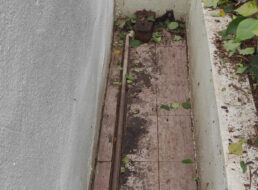Home » Archive by category "Cleaners & Detergent"
Category Archives: Cleaners & Detergent
-

Clean the Dirty Car Porch Tiles with Floor Cleaner
Posted on December 28, 2024 by admin in Cleaners & Detergent, Cleaning ServicesMaintaining the cleanliness of your car porch can be a challenge, especially if it has been neglected for some time. Dirt, fallen leaves, and even mold can accumulate, making the surface unsightly and difficult to clean. If you’re wondering how to effectively clean your car porch, here’s a proven method using a heavy-duty floor cleaner. […]
No Comments. Continue Reading...
